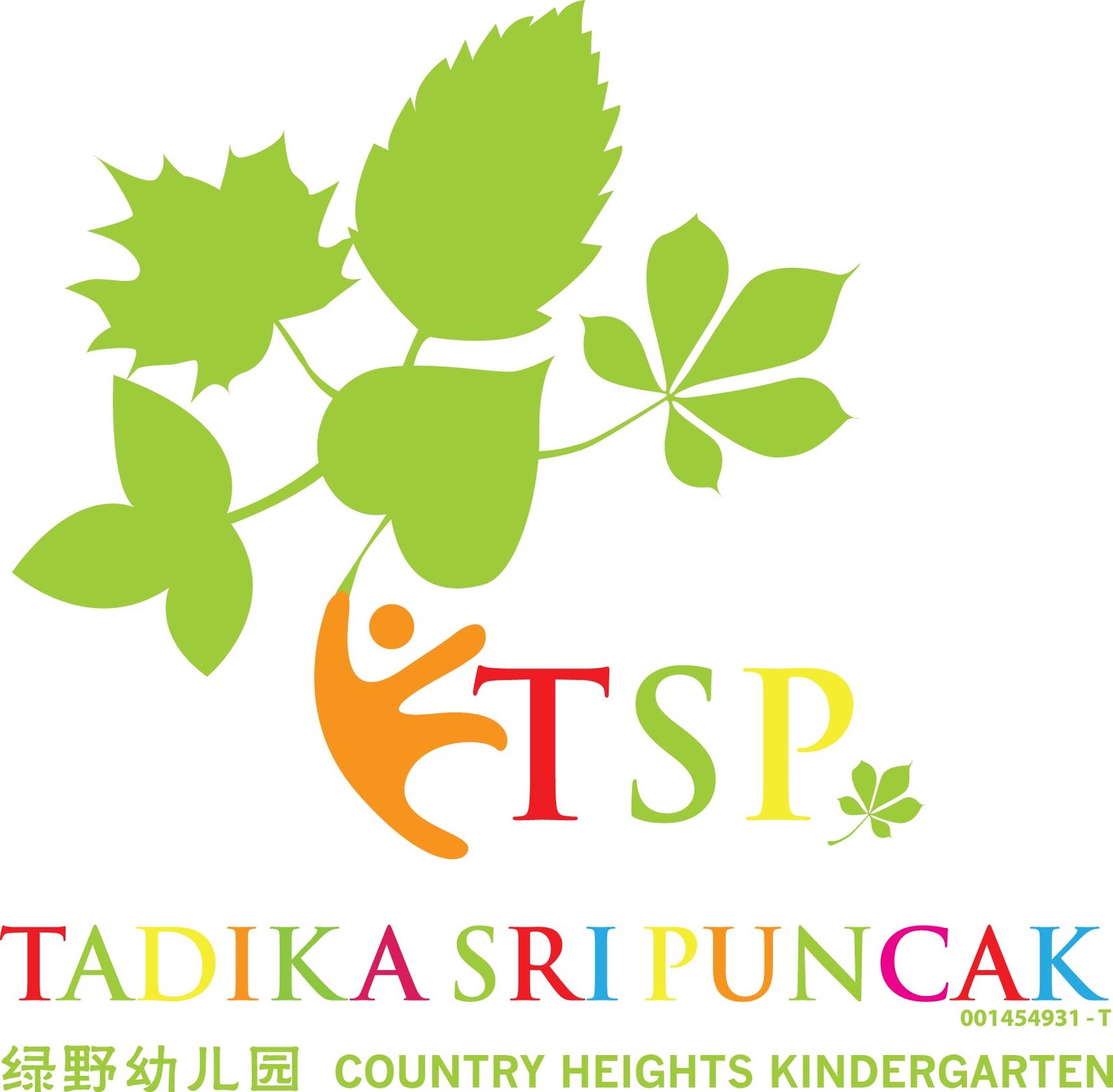
by Hidayah | Sep 2, 2021 | Events, Montessori 101, Montessori Learning
There is nothing better than training the kids from a young age to look after their clothes. Folding socks and clothes are a practical life activity for children that aims to develop concentration, coordination, independence and order. The folding socks activity also helps the child become independent by doing daily chores of life and instils a sense of confidence in them. “The first essential for the child’s development is concentration. The child who concentrates is immensely happy.” – Dr Maria Montessori.
In my experience with the needle as a child, I remember the focus I felt immediately, which encouraged me to stay in a task longer. The key to any success starts with concentration. Maria Montessori says: ” The life of the spirit prepares the dynamic power to daily life and on its side, daily life encourages thought by means of ordinary work.” -The child in the family, page 31

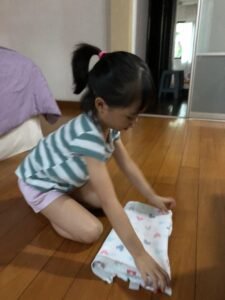









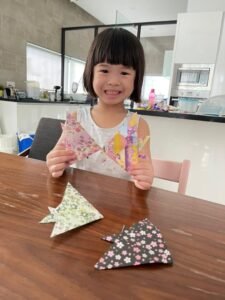


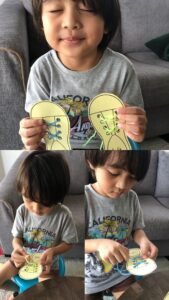




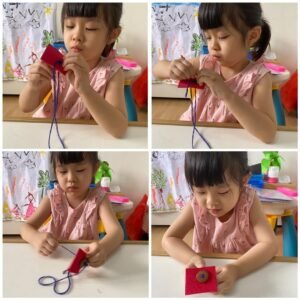



by Hidayah | Oct 6, 2018 | Montessori 101, Montessori Learning, Philosophy
Children in the Montessori classroom learn self-discipline through the enforcement of three simple rules:
- Take care of the people;
- Take care of the things;
- Make it work.
The first rule encompasses being kind to others, helping others, respecting the rights of others (not interrupting other children at their work, using a quiet voice indoors, etc.), and this rule is also expanded to include plants and animals.
The second rule includes the children in the care of their environment. By taking care of the materials that are so vital to their development (dusting, polishing, putting away properly, handling with care), the children grow in self-esteem, and, by controlling their environment, are able to control themselves.
If the first two rules are followed, “make it work” is a matter of course, and the children have the liberty to explore the environment, as their developmental needs demand. Sometimes a child will need adult help as she internalizes these rules and external discipline will need to be exercised. This is our procedure when external is deemed necessary:
- Redirect the child through alternative activities;
- Take time to talk with the indirect child; explore ways of making life more pleasant;
- The Directress will keep the disruptive child with her/him as she/he goes about assisting other children. This allows the child to observe the “normalized” behavior and perhaps find activities to the child’s liking.
- Persistent disruption may be dealt with by temporary removal from the group (time-out). The child may return to the group when willing to abide by the stated ground rules.
If necessary, the staff will seek parental help and guidance in understanding the child. If unable to resolve the problem with the assistance of parents, the staff will recommend professional help to parents. Under no circumstances shall any child be subjected to corporal punishment, verbal abuse, or be deprived of regularly scheduled meals or snacks.
Children learn to respect others after they have the experience of being respected. This is one of the basic principles of the Montessori philosophy and effective discipline. It is important for children to establish a sense of autonomy and self-confidence, to believe that they are worthy of respect, and to know how to live among people in a disciplined way.

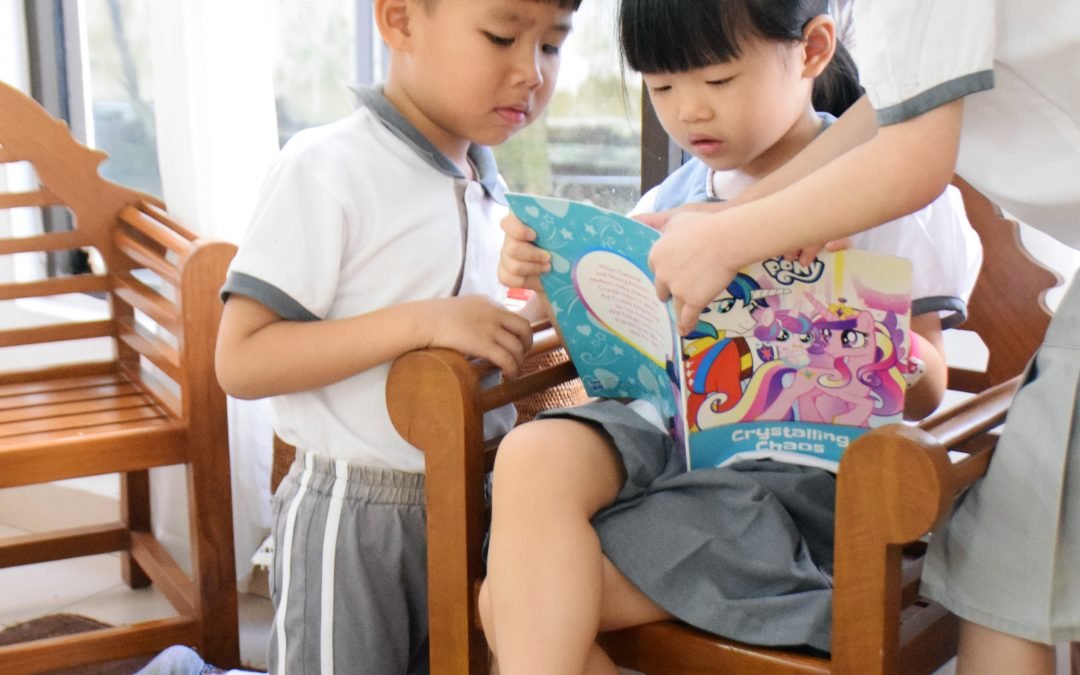
by Hidayah | Sep 28, 2018 | Montessori 101, Montessori Learning, Parenting
One of the most common questions parents ask is how will my child fare when he or she transitions from Montessori school into traditional school?
Whether it be kindergarten, college or somewhere in between, most Montessori students will eventually switch to another type of school. Parents worry that children accustomed to learning through the Montessori Method will struggle to adapt in different schools and classrooms. With some schools offering open classroom settings and with the adoption of the Montessori Method by private school systems, children with Montessori preschool background are at an advantage. Montessori children entering a traditional class also have no greater difficulty than other children do in making the adjustment. The children have learned to follow ground rules and need only to learn the ground rules of the new school.
The truth of the matter is that everyone’s life involves change. And this is actually a good thing, so long as you are equipped with the necessary coping tools and skills. Teaching our children to adjust to change without undue fear and anxiety is one of life’s important lesson for all children, Montessori- schooled or otherwise. But here’s the bonus for Montessori students: the Montessori Method is all about developing such coping tools through building confidence, independence, and problem-solving skills. As a result, most Montessori students are actually more adaptable than their non-Montessori peers. Studies show that children with a Montessori background are independent learners and thus more confident and task-oriented.
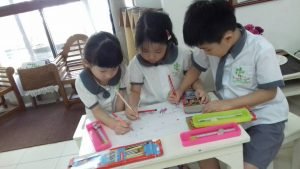
Academic Transitions
Most of the parental concerns regarding transition can be lumped into two main categories: academic and social. Some people believe that because the Montessori Method involves a lot of free choice and little to no testing and homework, Montessori students fall behind academically. Happily, this fear has been proven unfounded. As a rule, Montessori children do better on benchmark tests than students in traditional schools. Don’t take my word for it; have a look at the sources below:
Study Shows Improved Test Scores for Students in Montessori Schools– “New research suggests that children who attend Montessori schools may have an edge over other children in terms of both academic and social development.”
Evaluating Montessori Education– “…when strictly implemented, Montessori education fosters social and academic skills that are equal or superior to those fostered by a pool of other types of schools.”
Montessori Teaching Method Pays Off with Improved Test Scores, Discipline– “The implementation of a Montessori program has paid great dividends…. In addition to curbing discipline problems, all of her students have tested into the school’s gifted and talented program and have scored well on PACT and benchmark testing.”
Outcomes for Students in a Montessori Program– “In essence, attending a Montessori program from the approximate age of three to eleven predicts significantly higher mathematics and science standardized test scores in high school.”
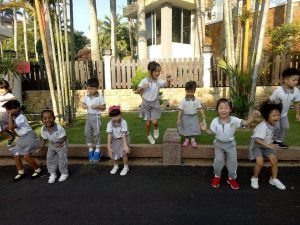
Social Transitions
When it comes to social transitions, again the Montessori students have an edge. Children in Montessori classrooms have learned principles such as courtesy, respect, positive decision-making, conflict resolution, and more. These skills serve them well as they adjust to new schools and meet new people.
Parents can also help their children adjust to change. First, we must remember to model a positive attitude about life transitions. It’s easy to be so distracted by our own discomfort with change that we forget to set a good example for our children. Children are learning how to adjust (and whether or not to be anxious) from us. Therefore, we must strive to see change as a challenge and not something to be feared and avoided. Also, pay attention to what you say in front of your children.
A few more suggestions for helping children adjust include:
- Listen to your children’s ideas for how to fix problems.
- Be open to a style that is not your own. In other words, your children might handle change differently.
- Make a point to meet your children’s new teachers. Attend “back to school nights,” etc.
👋最近好几个家长不约而同地问我,蒙特梭利幼儿园确保可以让他们顺利升上小学吗?😅😅😅
现在小学生的程度高、功课那么难!你们设计的进度赶得上吗?
😂😂😂
😍且让我细细道来。😍
孩子现在无论是正在上幼儿园,中学或大学,大多数蒙台梭利学生最终都会转学到另一种类型的学校。
有些父母会担心,习惯于通过蒙特梭利开放式教室环境,活泼的教学方法,随时发问的习惯,这类孩子将难以适应传统的学校和教室。
而实际上,观察我们历届的毕业生,他们曾经在蒙台梭利幼儿园学习,这些儿童在进入小学一年级,将进行的调整也没有比其他儿童具更大的难度。
以我们的经验分析,短则一周,长则三个月,小朋友很快就会适应新的小学生活。孩子们基本上学会遵循基本规则,只需要适应新学校的环境。
生活的现实是:每个人都将涉及变化。这实际上是一件好事,只要你具备了必要的应对工具和技能。
教导我们的孩子适应变化而不过度恐惧和焦虑!这是蒙台梭利教育在生活培训中重要的功课之一。
这也是蒙台梭利学生的特点:蒙台梭利教学方法是通过建立自信,独立和解决问题的能力来开发这样的特长以应对多变的社会。
因此,大多数蒙台梭利学生实际上比非蒙台梭利同学更具适应性。研究表明,具有蒙台梭利背景的儿童是独立的学习者,因此更加自信、笃定、乐观的适应新的环境。
⭐️课程衔接⭐️
关于幼小衔接,大多数父母关注以下两个层面:学术和社会。
有些人认为,由于蒙特梭利教学法涉及很多自由选择,很少甚至没有测验和家庭作业,以至于蒙台梭利学生在学业上与传统学校的学生比较下,明显落后。所以他们要在五六岁时将孩子送到传统的学校练习写很多字,以便让他们做好上小学的准备。
殊不知根据孩子六岁前的发展历程,孩子在这时期,最需要培养的是自信、与同侪互动合作的能力、自己的生活自理能力及无所不用其極地细心的呵护好不容易培养起来的创意和自信!而不是在这段时期任意打击孩子的信心、提早让幼儿进入小学化的课程,在他们的手眼协调、专注力及小肌肉还没有发展健全的时候,驯服于沉重的课业。
但是结果显示:这种担心被证明是没有根据的。在一些调查中,蒙台梭利儿童在基准测试中的表现多数优于传统学校的学生,
请看看下面调查资料来源:
研究显示:蒙特梭利学校学生在六年级的考试成绩有所提高
– “新研究表明,在学术和社会发展方面,参加蒙特梭利学校的儿童可能比其他儿童更具优势。”
-评估蒙特梭利教育研究显示 – “……当需要严格执行任务时,蒙台梭利教育培养的社会和学术技能与其他类型学校培养的技能相同或更高。”
-蒙台梭利教学方法随着考试成绩的提高而受到重视 – 纪律
“蒙台梭利教育计划的实施带来了巨大的回报……除了遏制纪律问题外,所有学生都参加了学校的天赋和才能,并在PACT和基准测试方面取得了很好的成绩。“
蒙台梭利教育计划中学生的成果 – “从本质上讲,参加蒙特梭利教学计划的时间从大约3岁到11岁,可以预测高中数学和科学标准化考试成绩显着提高。”
⭐️社会转型⭐️
谈到社会转型,蒙台梭利学生也有优势。蒙台梭利教室的儿童学习了诸如礼貌,尊重,参与决策,解决冲突等原则。这些技能帮助他们适应新学校和结识新朋友。
父母也可以帮助他们的孩子适应变化。
首先,我们必须记住建立一个关于生活转变的积极态度。由于我们自己对变化的不适而很容易分心,我们忘记为我们的孩子树立良好的榜样。孩子们正在学习如何从我们这里调整(以及是否焦虑)。因此,我们必须努力将改变视为挑战,而不是让人担心和避免。

by Hidayah | Sep 21, 2018 | Montessori 101, Montessori Learning, Parenting
Why Should The Child Attend School Before Age Six?
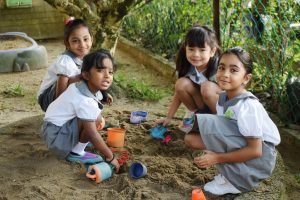
The first step in a Montessori education addresses itself to early childhood education and lays a foundation for how a child will learn throughout his/her life. A Montessori preschool is neither a baby-sitting service nor a regimented place where children are forced to achieve. We offer the child the opportunity to develop individually within a carefully defined structure. School is a natural and enjoyable experience.
Furthermore, the Montessori philosophy regards the years from birth to six as crucial in a child’s development. It is during this time that children have sensitive periods. This differs from a critical period. A sensitive period is one in which a child has a natural desire to acquire a particular trait or skill. He/she will occupy himself/herself with particular activities with an interest and concentration he/she will never again display for that particular activity. Unlike a critical period in which he/she must acquire the skill during that time or she will never acquire it, a sensitive period is one in which a child desires to accomplish a particular task. He/she could learn how to master that same task at a later time, but not with the same fervor, zeal and ease of the sensitive period.
Some examples of sensitive periods: Two-and-one-half and three-year-old children are usually in a sensitive period for order. If certain objects are not in their usual places, a young child will rearrange them until they are. It is also speculated that humor originates from this sensitivity. For example, if an adult put a vase on his head and called it a hat, a young child might be confused. She has recently learned in the order of our universe that vases are for flowers and hats are for heads. However, a four or five-year-old might find it amusing because the adult has deviated from the order the child knows well.
Four and five-year-old are in a sensitive period for writing. Parents also have reported that at a particular time their child will go through reams of paper printing numbers and letters. Their child really wants to perfect that skill. The length of this period varies and it is a transitory one. Once it is over, the child will still want to print numbers and letters, but not with the same fervor of the original period. Teachers have also observed children who were in a sensitive period for learning the sounds of letters. Each day some children would come to school and want to work on the letter sounds to the exclusion of other activities.
There are various sensitive periods. A parent or teacher cannot create a sensitive period in a child; however, the adult can follow and help the child to develop his/her interests. The Montessori school aids the child by providing opportunities for his/her to accomplish the tasks that are important to his/her at a given time. A traditional school, with time blocks for subjects and a curriculum into which each child must fit is not always able to help a child develop his/her interests and sensitivities.
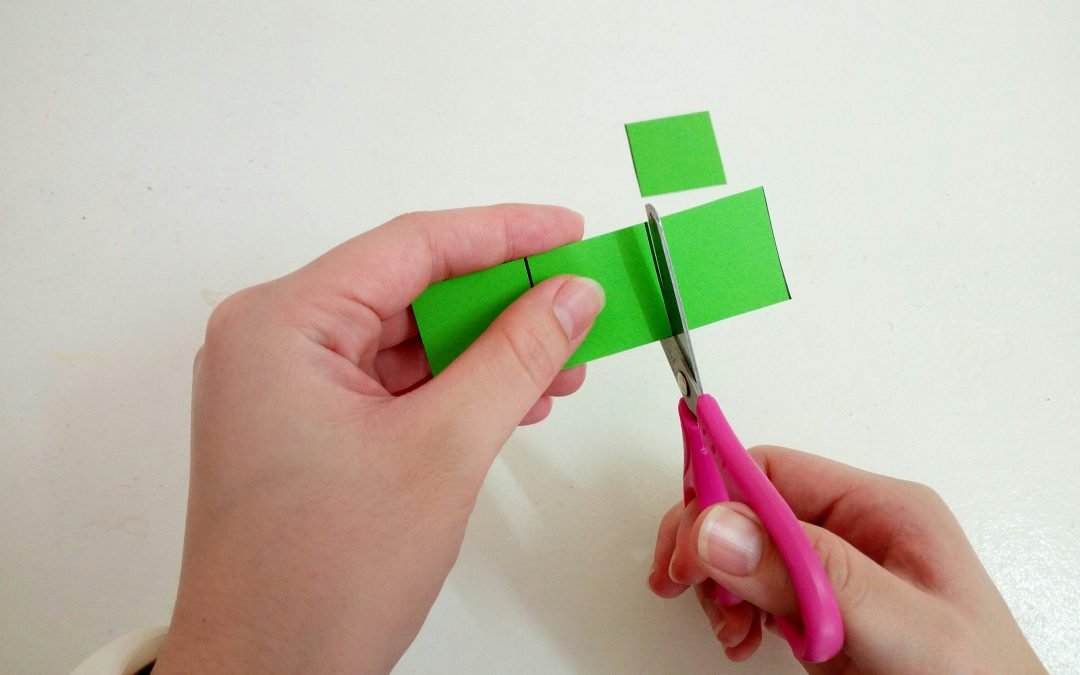
by Jess Liew | May 18, 2018 | Montessori 101, Montessori Learning
Do you start by giving your child a scissors and paper and say, “We are going to do cutting, see how I hold the scissors , see how I cut. Now you try.”
When your child struggling to cut, you started to hold his hand and cut together?
When you follow the development sequence of scissors cutting skills, your kids will be much more successful cutting with scissors.
To start to use scissors and start to cut like a pro, what are the skills needed?
– To have well developed fine motor skills.
– Hand-eyes co-ordination skills while moving the scissors following the line.
– Bilateral co-ordination, where by involving moving both sides of the body at the same time, while each hand is performing different task. This is where one hand doing the cutting, the other hand holds the paper and turn it. This is a challenge for young kids!
Let’s see what are the sequence to prepare for cutting using scissors?
Activities to develop scissors skills:
- In Practical Life of Montessori Classroom, we have varieties of transferring objects or water from one container to another container with hands, tongs, ladle, tweezers or pipette. These can be prepared in your home environment too.
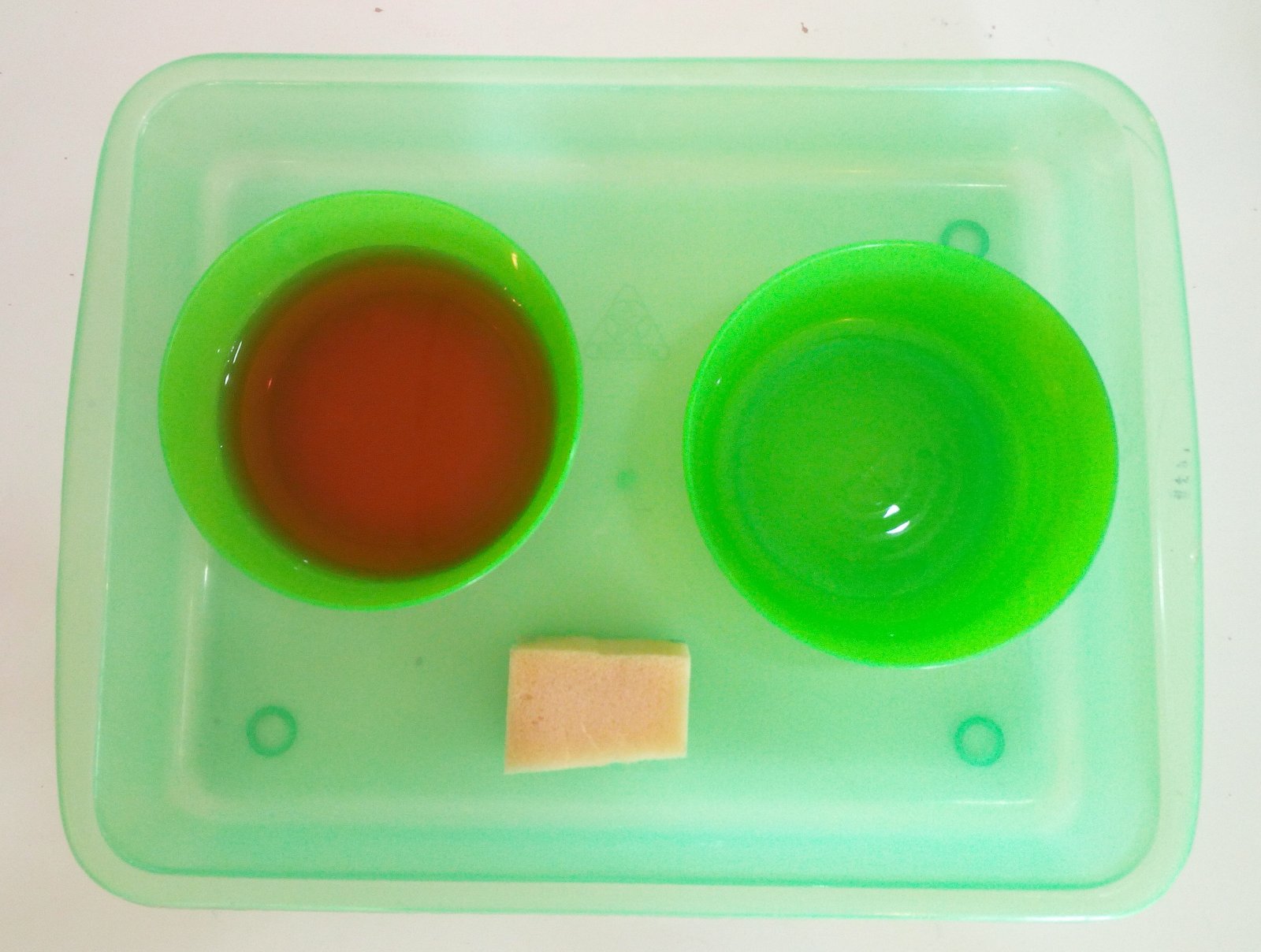
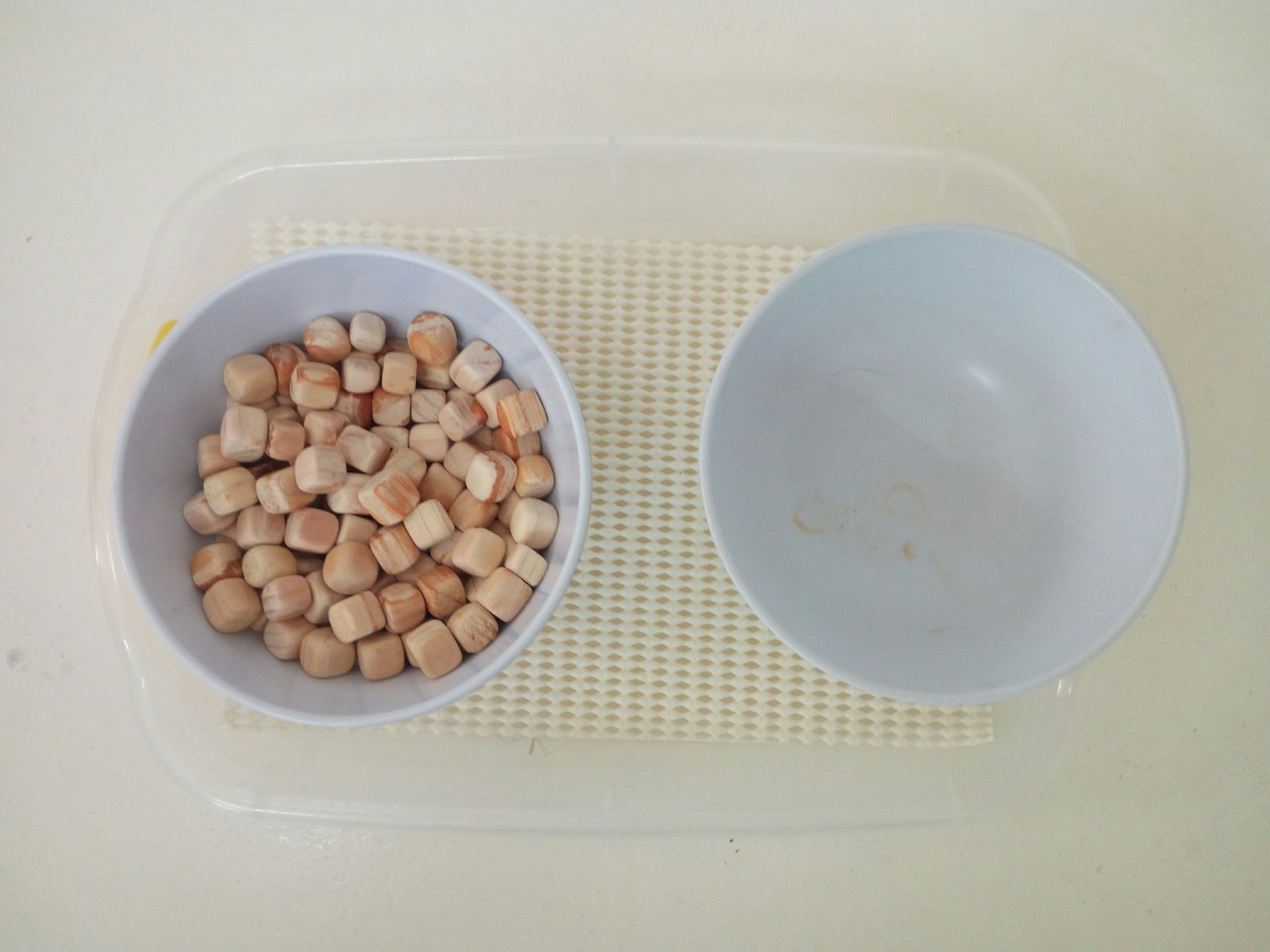
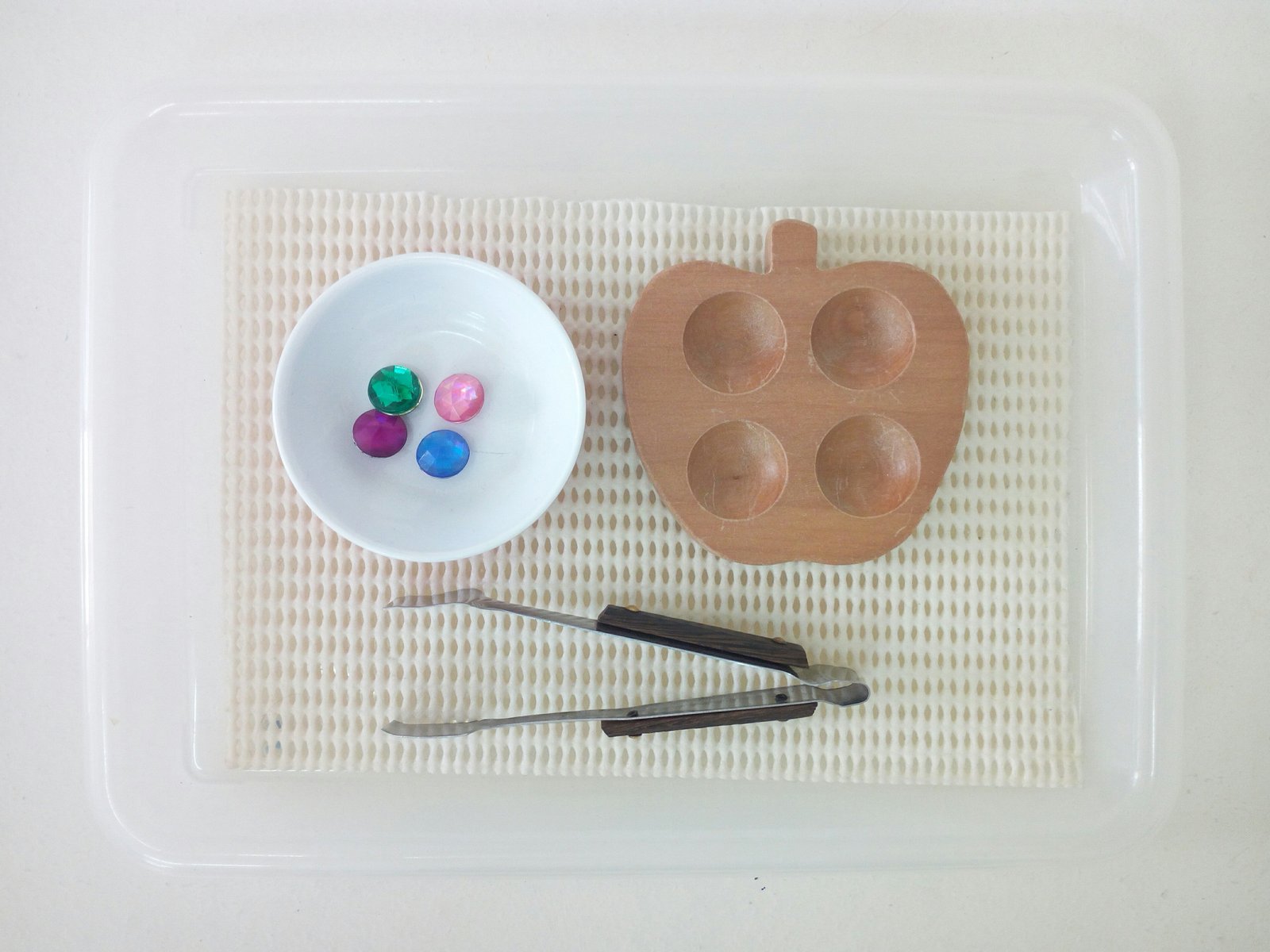
2. Ripping papers
Prepare strip of colour papers, allowing the child using their tripod grasp (thumb and first two fingers) to grip the papers and rip. The ripping by moving the hands in different direction allowing the child to practice their bilateral coordination skill too. As they demonstrate readiness, move to larger piece of paper.

3. Sinpping
Snipping is an activity where the child practice opening and close the scissors one time only which results in successfully cutting something. This is to strengthen the hands muscles and prepare for longer lines cutting.

Note: A demonstration is needed to show how to hold the scissors before start this activity.
4.Fringe
Before the child given to longer line cutting. The child proceeds to fringe cutting so that the child learn to stop where the line end.
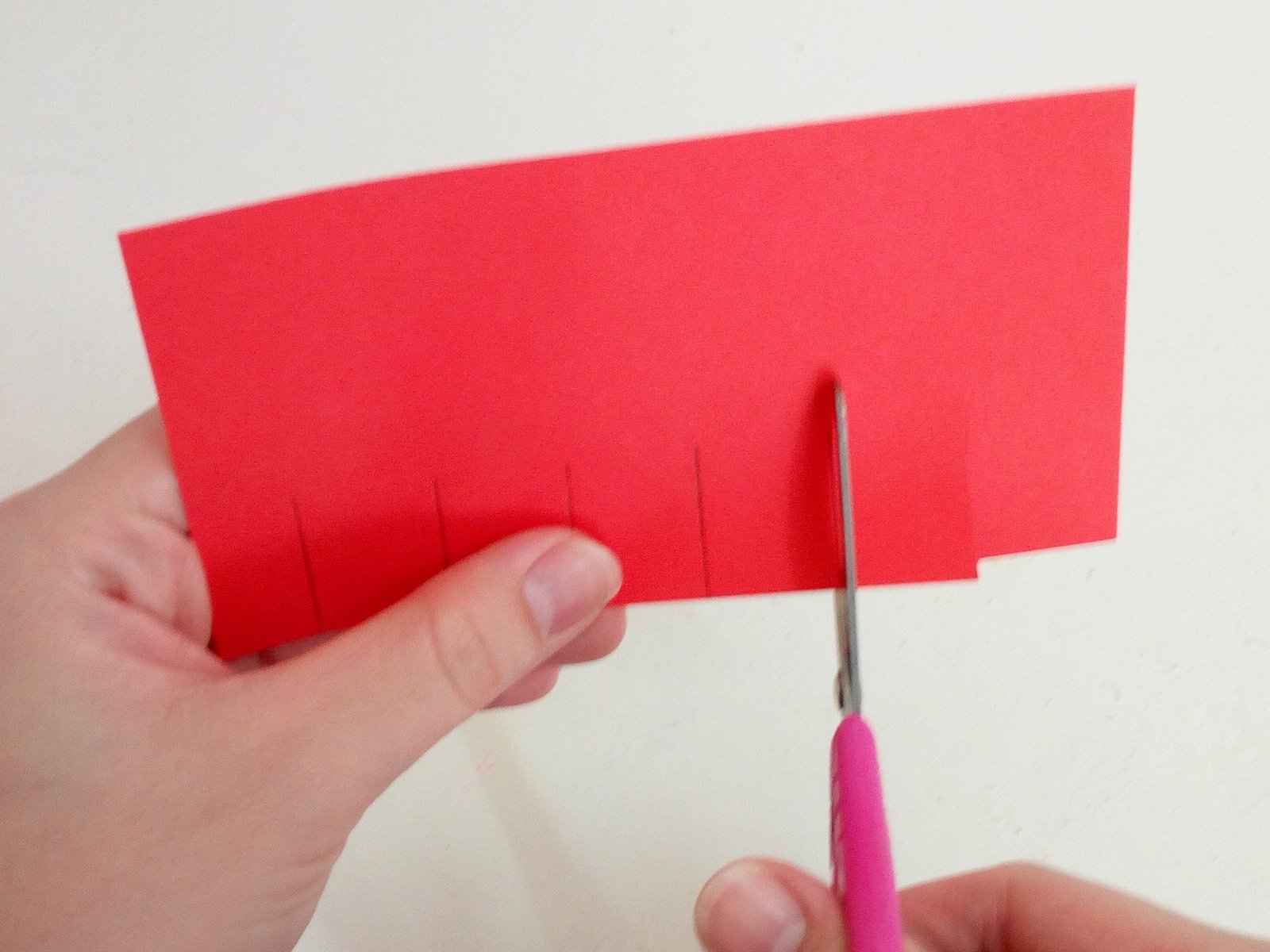
5. Cutting straight lines
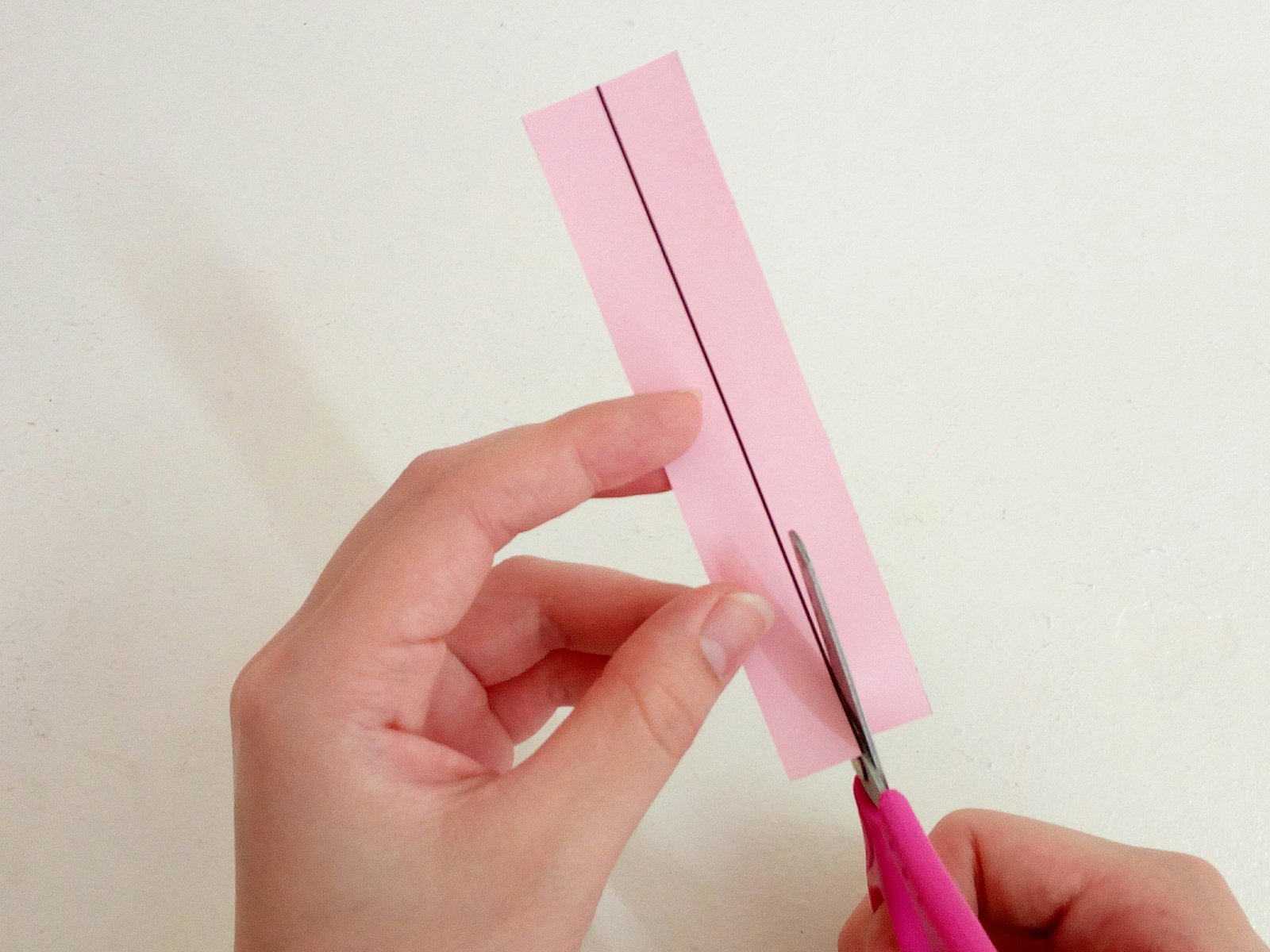
Start given a strip of paper drawn 2 long straight vertical lines. The child need to cut from one point to another point by open and close the scissors multiple times.
It is a tiring work for the child.
The child can be given diagonal straight lines as an add-on practice.
6. Cutting Zig-Zag lines

Next, is cutting the zig-zag line. This is a more challenging where the child requires to slightly turn the paper as they cut.
7. Cutting Curved Lines
There are varieties of curved lines with different level of challenges for the child. This can be tricky to young children. Observed the child progress on cutting in the previous activities to know whether the child is ready for this challenge, otherwise, it can be demotivating the child if it is too challenge for him.


8. Cutting right angles
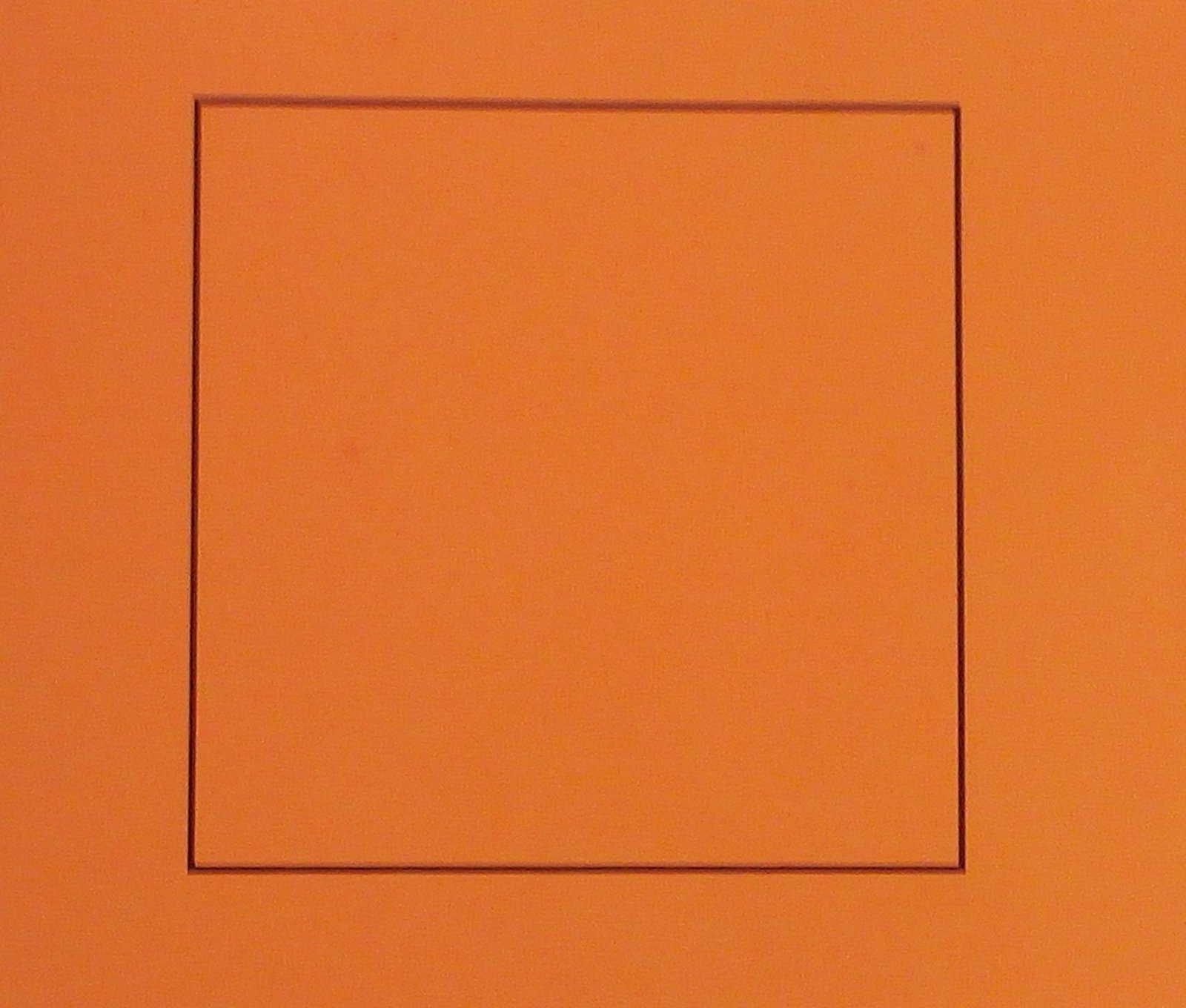
Prepare papers with right angles shape like squares and rectangles. A demonstration may have needed to show how to turn the paper. The child may try to turn their arm instead of paper and cut in an awkward way.
Note: Pasting using glue will be another activity that need to be introduced. Do not attempt to do both at the same time at the beginning.

by Sophie Lee 李淑儀 | May 7, 2018 | Montessori 101, Philosophy, Reflection
 👵Maria Montessori 于1952年5月6日因病在荷兰阿姆斯特丹与世长辞,享年82岁。
👵Maria Montessori 于1952年5月6日因病在荷兰阿姆斯特丹与世长辞,享年82岁。
❤️今天是她老人家逝世66周年纪念日。❤️
🙏谢谢她在我短短23年的幼教生涯中,⭐️启发我相信孩子本性喜欢学习与工作,⭐️并能自我完成自己的成长历程,老师们从中设计与准备环境,让孩子们掌握各种技巧!
👶帮助孩子们走向独立,是教育唯一的路…
父母亲们若了解其中道理,教养态度则不再被扭曲!
❤️若爱孩子,请观察自己的亲生孩子、跟随孩子,了解孩子。

Montessori 教育的几项重点如下:
教育思想:创建和谐社会、创造世界和平要从儿童教育入手,把幼儿培养成为建立和维护世界和平的天使。
教育理念:依据人类自然发展的规律,充分掌握人在自然成长过程中身体器官最佳的发展时期,实施教育和训练,以促进人类的快速发展。
教育目标:培养幼儿学会学习与学会认识,帮助学会自我生存,训练幼儿学会做事,教会幼儿与同伴共同生活
请参考详文:
写在蒙特梭利博士逝世66周年
https://mp.weixin.qq.com/s/xGiGqo8jMMvgvnhwTMiRbw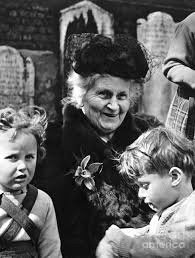

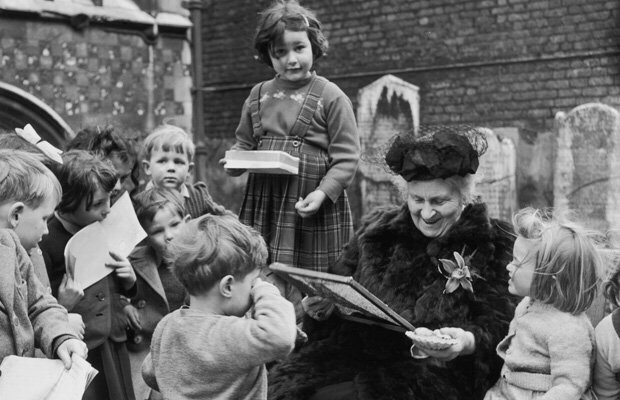
写在蒙特梭利博士逝世66周年
玛丽亚·蒙特梭利博士( Dr. MariaMontessori )于1870年8月31日出生在意大利安科纳省(Ancona )的基亚瓦拉莱镇(Chiaravalle ),1952年5月6日因病在荷兰阿姆斯特丹与世长辞,享年82岁。
今天是蒙特梭利博士逝世66周年,让我们在此一起重温蒙特梭利的教育,共同缅怀和纪念这位世界教育的伟人,铭记她的教育理念,学习她一生自律、自爱的独立个性,热忱助人和无私奉献教育的博爱情怀,正确理解她的教育思想,灵活运用好她创建的教学方法,努力为中国的学前教育服务,为幼儿园教育服务,为中国的婴幼儿享受公平、科学、先进的教育服务,同心同德为创建新时期中国特色社会主义强国的学前教育贡献自己的力量。
玛利亚·蒙特梭利博士( Dr. Maria Montessori )是意大利著名儿童教育家和世界教育史上杰出的幼儿教育思想家,幼儿教育改革家和幼儿教育实践家。她所创造的蒙特梭利教育,适用于全世界所有的幼儿,能帮助智障儿童快速恢复体智,能使健康儿童得到全面体智与潜能的迅速发展,不仅适用于幼儿园教育,而且适用于家庭教育;不仅适用于婴幼儿的启蒙教育,同时适用于中小学教育,乃至大学教育。
一百多年来,蒙特梭利教育在世界一百多个国家和地区广泛使用,推动了世界性现代幼儿教育的改革和发展。世界教育学领域证实了它所拥有的特别地位,证实了它的深远、广泛、持久是世界上任何一种教育法都无以伦比的,成为了联合国教科文组织收录的宝贵遗产和广泛向世界各国推广使用的教育和教学方法,被誉为推动世界教育发展和促进人才培养的瑰宝,世界教育发展的指路明灯。
蒙特梭利教育对世界教育和人类发展的十大贡献
(1)改变了社会长久对智障儿童是精神病人的错误认识,把智障儿童从精神病人的群体中解放出来,并提出了一系列的教育教学方法。
(2)提出了“创建和谐社会、创造世界和平要从儿童教育入手,把幼儿培养成为建立和维护世界和平的天使”的教育理念。并用她一生的研究和传播宣讲,从理论和实例帮助社会和各国的教育改变了对幼儿教育的认识,提高到发展整个社会,提高到发展人类健康,乃至实现世界和平的高度来认识。同时从培养幼儿学会认知,帮助幼儿学会自我生存,训练幼儿学会做事,教会幼儿与同伴共同生活入手,提出了检验教育培养人才的标准。
(3)创建了教师培养的跟踪管理机制,有效的促进了教师的教育思想和教学技术的不断提高,帮助教师建立了忠于教育、终身从事教育,形成具有特色教学能力和教学技术的教师。将幼儿教师从一般的“嬷嬷”,培养建设成社会高级别的教师,最大程度的改变了幼儿教师在社会的地位。特别是将从事蒙特梭利教育的幼儿教师塑造成为了世界最高教育技术级别的幼儿教师。(现在各国报考设立在美国的国际蒙特梭利教师学校,必须是具有较高英语能力,具有学前教育大学本科毕业,学习过教育管理学课程,从事幼儿教育工作两年以上的才能报考。其在校学制分别为二年的硕士和四年的博士学历。蒙特梭利教育培训教师成为了世界职业高等技术报考要求最为严格和要求最高的高级职业技术职称。)
(4)提出了以儿童为中心的教育,反对以成人为本位的教育和教学。明确指出了幼儿教育是以幼儿成长需求为中心,以帮助幼儿快速适应生活,掌握生活技术并形成生活能力为目的开展的“以用为学”,“以用为教”的科学育儿,明确了“教与学”和“学与教”的辩证关系,充分体现出以用为学,以用为教的教学思想。
(5)提出了“幼儿教育是人类健康发展的基础”。倡导幼儿教育必须有前瞻性,必须从人类健康发展的角度,用多种科学发展的哲学观去思考和开展幼儿教育。教育幼儿必须承前启后,必须为幼儿弥补婴儿教育时期的不足,必须科学的与成长发展的小学教育科学衔接,一切以为未来接受教育奠定基础,警示了幼儿教育工作的思维角度。
(6)创造了混龄教育,为世界教育创建了新的教学模式和教学思想。并为幼儿教育和幼儿的发展提供了更多的观察、模仿和学习的机会,有效地促进了幼儿智力和语言的发展,促进了幼儿认知能力的发展,特别是幼儿创造性和实践能力的提高,弥补了独生子女家庭生活的不足,更多地满足了幼儿社会性交往的需要和合作学习的需要,对幼儿的角色扮演、交往能力、社会责任感的形成都有不同程度的促进作用,有效的促进幼儿从小进入社会得到发展的培养,提出了教育与社会相结合的教育新思想。
(7)创建了社区“儿童之家”模式的幼儿教育,解决了社会资源的需求,为幼儿创造了就近入园,尽早接受早期教育,开辟了社会教育的新模式。促进了与教育相结合的社会发展城市建设的社区建园。(蒙特梭利为幼儿创造“就近入园”接受教育的思想,正是今天中国发展学前教育,推动社会办学,快速解决上千万幼儿就近入园,入好园,接受规范教育可借鉴的最佳模式。)
(8)根据幼儿成长的需要总结提出了日常生活教育、感官教育、文教育、数学教育、自然人文教育五个教育领域,并依据这些内容创建了教学的方法,明确了学习不是设定的单一课程,而是贯穿在自由的环境中,开创了有明确主题,以教具和有明确的智力目标活动的区域性教学环境和教学活动,指导了世界的幼儿教育。
注:蒙特梭利教学法的内容涉及五个教育领域:
1.日常生活训练(包括学会照顾自己,适应教室常规,照顾环境,基本动作和社交行为);
2.感觉教育(包括视觉、听觉、触觉、味觉、嗅觉);
3.数学教育(包括建立数的概念,数的运算);
4.语文教育(包括书写的准备,字母、笔顺的练习,简单的单词和短语);
5.科学、文化类教育(包括音乐、美术、地理、历史、动植物等知识和能力)。
(9)综合人类与社会发展的特性,科学的分析了实现完美教育的重要环节,指出了教育必须与家庭相结合为幼儿创造出最完美的教育环境,提出了幼儿园教育与家庭教育紧密结合的科学性和必要性。
(10)在法国医学家伊塔(J.M.G.Itard)和美国精神病医生塞根(E.Seguin)从医学角度提出的“生理教育法”的基础上,提出了“科学教育”。倡导幼儿教育必须依据人类发展的自然规律,尊重3-6岁儿童生理发展的特点进行科学的教育,总结和归纳了幼儿教育必须掌握和运用好幼儿敏感期进行教育。提出了儿童是通过与周围环境的密切接触(包括人与事物)与情感的联系,从而获得各种知识和体验,反映成经验,映进脑海里,这种与生俱来的潜力就叫做是吸收性的心智的教育理论。并告诫我们,幼儿的吸收性心智从出生后就会急速发展,幼儿的敏感器官和敏感期虽然是有阶段的发展,但是,是同时存在的,是在相互连同、相互使用、相互促进中共同发展的。同时从医学,人类学,教育学的角度总结和归纳了幼儿敏感期九个时段的特征。
蒙特梭利教育体系
仔细阅读蒙特梭利的教育著作和她的理论书籍,不论是用意大利文和德文书写的,还是用英文书写的,都不难看出,蒙特梭利很多的教育理论和著作都是来自于她长期观察和研究儿童与投身教育改革实验研究的总结和概括,其书籍多数是由辅导会上的演讲发言稿和论文整理而成的。尽管这样,这些文章不失展现和表述了她的教育思想和在实践中不断提高,不断完善和创造着的她的教育体系,集中体现出:
教育思想:创建和谐社会、创造世界和平要从儿童教育入手,把幼儿培养成为建立和维护世界和平的天使。
教育理念:依据人类自然发展的规律,充分掌握人在自然成长过程中身体器官最佳的发展时期,实施教育和训练,以促进人类的快速发展。
教育目标:培养幼儿学会学习与学会认识,帮助学会自我生存,训练幼儿学会做事,教会幼儿与同伴共同生活(注:四个检验教育培养出来的“人才标准”)。
教学要求:不断发现和刺激幼儿想成发展的需要,帮助幼儿根据自我潜能的需求而自发追求学习。
教学方法:帮助幼儿在多种环境下的工作中学习,在反复练习中提高,在多项社会实践的工作中发展和创造。
教学环境:提供能吸引和激发孩子兴趣,尊重孩子需求的活动环境,提供符合他们自然发展的用具,提供能够让孩子动手创造的活动,并维持环境的气氛和秩序,避免孩子在工作的时候受到干扰,给予孩子需要的及时指导和帮助。
教师要求:教师首先是去适应学生,而不是让学生去适应教师。教师的工作是观察儿童内心的需要,为他们设计教学的环境,并示范教具的操作,引导儿童进入工作状态,再根据儿童的个别差异因材施教,提供适时的引导,以及安全保护和指导。
蒙特梭利博士这一系列的教育思想,教学方法和教学管理,以及对教师的工作要求和对教育发展的哲学观,指导了整个世界的教育,成为了享誉世界,超越国界、超越世界观、超越宗教差异,快速在世界发展和普及的典范。
注:蒙特梭利博士是一位伟大的教育实践家和改革家,但严格的来说,她还不是一位教育理论家。她撰写了一批幼儿教育著作,其中比较著名的著作有《蒙特梭利方法》(1909年)、《高级蒙特梭利方法》(1912年)、《蒙特梭利手册》(1914年)、《童年的秘密》(1936年)、《新世界的教育》(1946年)和《有吸引力的心理》(1949年)等。这些教育理论和著作是她长期观察和研究儿童与投身教育改革实验研究的总结和概括,所出版的书籍大部分来自于演讲稿的整理。而在她的有生之年,却一直未能整理出证实自身教育的理论体系,这也是后人在学习、继承和发展她的教育时,有一定困难的遗憾。蒙特梭利教育法广泛的适用于世界各国,其教育体系的理论和理论体系,还有待于世界各国共同来研究。德国研究蒙特梭利教育理论的专家奥士华德博士(Panl Oswald)曾经说过:“研究整理出一个蒙特梭利教育理论的体系是属于一种国际性的课题。”























